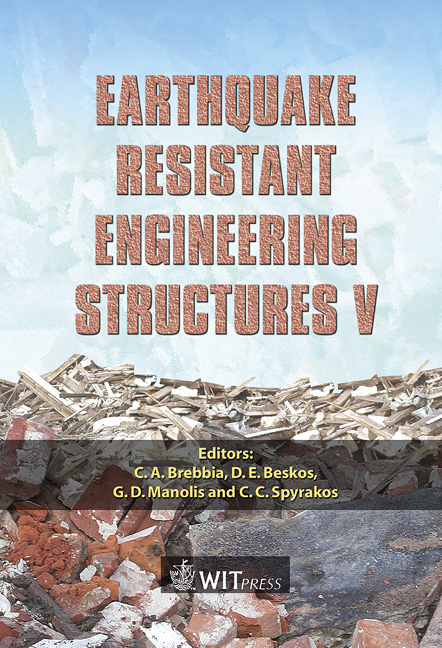Variation Of Response With Incident Angle Under Two Horizontal Correlated Seismic Components
Price
Free (open access)
Transaction
Volume
81
Pages
10
Published
2005
Size
458 kb
Paper DOI
10.2495/ERES050181
Copyright
WIT Press
Author(s)
A. M. Athanatopoulou, A. Tsourekas & G. Papamanolis
Abstract
The response variation with the incident angle under two horizontal translational components of ground motion without the use of the Penzien–Watabe model – i.e. these components can have any degree of correlation – is investigated. For this purpose ten R/C buildings are analysed using the linear response history method under eight earthquake records for incident angle varying from 0 to 180 degrees. The results of the analyses show that the maximum value of a response quantity can be up to 176% larger than the value produced when the seismic components are applied along the structural axes. Keywords: seismic excitation, horizontal components, correlated components, incident angle, maximum response, response variation. 1 Introduction Seismic codes require consideration of the two horizontal and the vertical components of ground motion. When the components are defined along the principal axes of ground motion they are uncorrelated [9]. Standard practice is to determine separately the peak responses of the structure due to each component of ground motion –with the horizontal components applied along the structural axes- and combine the peak responses according to a directional combination rule. In practice the principal axes of ground motion of the design earthquake are unknown. Hence it is prudent to design for the orientation of the principal axes that yields the maximum response. Several researches have investigated the critical incident angle and the corresponding maximum response in the context of the response spectrum method and using the Penzien–Watabe model, i.e. assuming the translational components of ground motion uncorrelated
Keywords
seismic excitation, horizontal components, correlated components, incident angle, maximum response, response variation.





